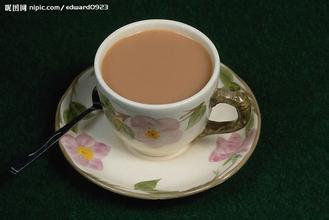What are the roasting techniques of coffee beans? how about Turkish coffee?
Baking, as the name implies, is to provide heat to coffee beans, causing a series of chemical changes inside. First of all, the starch in raw beans will be converted into sugars and acids because of high temperature, while substances such as cellulose will be carbonized differently. Water and carbon dioxide evaporate, while proteins are converted into enzymes, which combine with the rest of the fat to form an oil film on the surface of coffee beans. Coffee beans swell when roasted, a bit like popcorn, and interestingly, coffee crackles during roasting, just like we use microwave popcorn. But because the skin on the surface of coffee beans is very tough, we usually don't see coffee beans crack like popcorn.
We often see that roasted coffee beans have different shades of color, on the one hand, this may be due to different types of individual coffee beans, and on the other hand, the main reason for this color difference is the different degree of roasting. In the most popular language, the degree of baking can be interpreted as the heat of baking. Take the most classic example of carbonated coffee, a French roasted coffee that is highly carbonized, dark brown and carbon black due to its deep roasting (either because of the high temperature during baking, or because of the long baking time, or both, depending on the situation). It is generally believed that carbonized coffee tastes bitter, which comes not only from caffeine but also from carbonized coffee beans.
Coffee roasting is divided into the following degrees:
1. Very shallow baked Light Roast
In the mildest baking method, the beans are yellowish brown and the aroma and concentration are mild and light, which can be used as a standard for identification in the early stages of baking.
2. Shallow baking / cinnamon baking Cinnamon Roast
As the name suggests, the beans are cinnamon-colored, slightly thicker than very light roasted, and refreshing in taste.
3. Medium baked Medium Roast
The beans are chestnut, sour and bitter have been released, its taste is deeper than light roasting, fresh aroma, mild taste, suitable for brewing American coffee.
4. Medium and deep baked High Roast
The beans are tea-brown and give people a slightly stronger impression than medium-baked beans. The aroma and color are balanced, and the bitter taste is stronger than the sour taste.
5. Deep baking / city baking City Roast
The beans are tea-brown, with a balance between sour and bitter taste, mellow and quite baked.
VI. Very Deep Baking / Deep City Baking Full City Roast
The beans are dark brown, sour and bitter. Because of bitterness, it is suitable for iced coffee.
7. French baking French Roast
Beans are dark brown, because deep roasting, beans contain fat floating to the surface, appears to be bright, bitter, roasted flavor is very strong, suitable for coffee Oulei.
8. Italian baking Italian Roas

Important Notice :
前街咖啡 FrontStreet Coffee has moved to new addredd:
FrontStreet Coffee Address: 315,Donghua East Road,GuangZhou
Tel:020 38364473
- Prev

How should coffee beans be roasted? factors that affect coffee futures prices
Baking or mixing first has always been a controversial issue among bakers. Generally speaking, each product is roasted first and then mixed, which will maximize the different flavor characteristics of each kind of coffee and produce the best effect. The classic Blaser coffee beans launched by the Swiss coffee maker use this way to bring you the most delicious coffee. Fresh baking
- Next

The blending method and taste of coffee introduce the famous baristas in China
1. 40% of the city-wide roasted Colombian Tuluni coffee-for better taste (it can also be other Colombian coffee, Nicaraguan La Illusion, or Brazilian Monte Carmelo coffee) 2. 30% French roasted Mexican Tres Flechas coffee-clear, charred (or other Mexican coffee) 30% or 30% of the city
Related
- Does Rose Summer choose Blue, Green or Red? Detailed explanation of Rose Summer Coffee plots and Classification in Panamanian Jade Manor
- What is the difference between the origin, producing area, processing plant, cooperative and manor of coffee beans?
- How fine does the espresso powder fit? how to grind the espresso?
- Sca coffee roasting degree color card coffee roasting degree 8 roasting color values what do you mean?
- The practice of lattes: how to make lattes at home
- Introduction to Indonesian Fine Coffee beans-- Java Coffee producing area of Indonesian Arabica Coffee
- How much will the flavor of light and medium roasted rose summer be expressed? What baking level is rose summer suitable for?
- Introduction to the characteristics of washing, sun-drying or wet-planing coffee commonly used in Mantenin, Indonesia
- Price characteristics of Arabica Coffee Bean Starbucks introduction to Manning Coffee Bean Taste producing area Variety Manor
- What is the authentic Yega flavor? What are the flavor characteristics of the really excellent Yejasuffi coffee beans?

